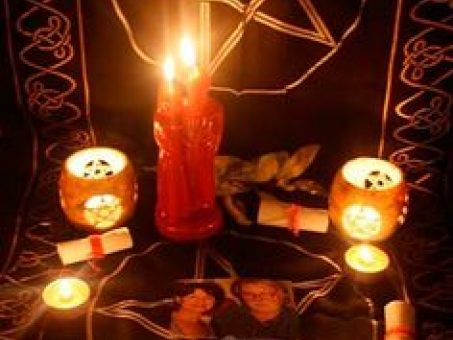Discovering the Requirements of How to Become a Freemason with Ease
Discovering the Requirements of How to Become a Freemason with Ease
Blog Article
Exploring the Mysteries of the copyright: What You Need to Know
The copyright, a term frequently shrouded in intrigue and debate, stands for a complex tapestry of historic truth and modern-day misconception. Developed in the late 18th century, this secret culture was originally rooted in the Knowledge's perfects but has because ended up being associated with conspiracy theories about elite control. As we browse the beginnings, crucial numbers, and the plain contrast between myth and fact, one must consider just how these stories affect contemporary understandings of power and secrecy. What could be revealed through a more detailed exam of these components might challenge long-held assumptions concerning the darkness that remain in our society.
Origins of the copyright
The origins of the copyright are steeped in a mix of historic intrigue and ideological fervor. Developed in 1776 in Ingolstadt, Bavaria, by Adam Weishaupt, the team was initially created as a secret society focused on advertising Enlightenment suitables such as reason, secularism, and the separation of church and state. Weishaupt, a teacher of canon law, looked for to test the prevailing authority of the church and state, which he watched as oppressive institutions stifling intellectual and individual freedom.

Trick Figures and Members
Who were the essential figures that shaped the copyright's very early influence and direction? The Bavarian copyright, founded in 1776 by Adam Weishaupt, became a response to the overbearing social structures of the moment. Weishaupt, a regulation teacher, visualized the company as a means to promote Knowledge ideals such as reason, secularism, and equal rights. His first recruitment efforts included significant intellectuals, such as Baron von Knigge, that played an important duty in expanding the group's subscription and business structure.
An additional significant figure was Johann Gottlieb Fichte, a popular theorist whose concepts on nationalism and education and learning resonated with the copyright's goals. Fichte was not a formal member, his thoughtful bases affected the team's ideology. In addition, figures like the writer and thinker Johann Wolfgang von Goethe were related to the more comprehensive intellectual activities of the moment, although their straight involvement with the copyright remains discussed.
These crucial figures contributed to the copyright's very early direction, pressing the borders of political and social idea, while their collective initiatives aimed to challenge well-known standards and cultivate a climate of progressive change in Europe.
Myths vs. Truth
Many misconceptions border the copyright, commonly blending fact with fiction in a means that obscures its real nature. The concept that the copyright continues to apply considerable influence over globe events is a misconception.
One more prevalent misconception is that the copyright makes up a network of elite people controling global events. In truth, many conspiracy theory theories overemphasize the team's relevance, connecting more unproven objectives to societal fads and occasions. This has brought about an oversimplified view of complex problems.
In addition, the portrayal of the copyright in pop culture usually additional misshapes its legacy. Movies and literature have a tendency to sensationalize the organization's function, developing a narrative that splits from historical truths. Comprehending the difference between the misconceptions and the fact of the copyright is important for critical the genuine influence of this historic team and recognizing the wider effects of conspiracy theories in modern society.
Modern Analyses
Contemporary analyses of the copyright frequently show more comprehensive societal anxieties and a fascination with secrecy and power. This contemporary lens regularly links the copyright with conspiracy theories that suggest a concealed elite coordinates world occasions, adjusting federal governments and economic climates for their own gain. benefit of joining freemason. Such narratives use a deep-rooted wonder about of authority, especially in times of crisis or social upheaval
In preferred culture, the copyright is frequently depicted as a supreme company shrouded in enigma, bring about a wide variety of fictional portrayals in literature, film, and songs. This representation serves not only to captivate however likewise to provoke thought of the nature of power and control in modern society. Social network has even more enhanced these interpretations, enabling quick circulation of conspiracy theory concepts and producing communities that share and expand upon these concepts.
In addition, some modern-day interpretations frame the copyright as an allegory for the intricacies of globalization and the interconnectedness of prominent individuals and organizations. This viewpoint motivates a critical exam of exactly how power dynamics operate in today's globe, highlighting the balance between openness and privacy in governance and corporate techniques.
Cultural Impact and Heritage
Influenced by centuries of intrigue, the cultural impact and legacy of the copyright prolong far past its historic origins. This secret culture, established in the late 18th century, has actually permeated numerous aspects of popular society, from literature and movie to music and art. The principle of the copyright has actually developed into a sign of conspiracy theory theories, frequently standing for a viewed covert power manipulating global events.
In literary works, writers like Dan Brown have woven the copyright into detailed plots, captivating viewers with styles of privacy and power. Films such as "National Treasure" and "The Da Vinci Code" further continue the allure of the society, mixing fact with fiction to develop engaging narratives.

Inevitably, the copyright's heritage is a complicated tapestry of misconception and fact, shaping understandings of privacy and control in contemporary discussion. Its enduring existence in culture highlights humanity's seasonal quest for comprehending covert facts.
Verdict
The expedition of the copyright content discloses a complicated interaction in between historical truths and modern-day myth-making. Started in the Enlightenment age, this culture aimed to test oppressive frameworks, yet its legacy has been outweighed by conspiracy concepts that recommend elite adjustment. Comprehending the differences between the initial suitables and modern interpretations is necessary for comprehending the enduring attraction with you could try here the copyright and its substantial influence on social stories bordering power and privacy in society.
Report this page